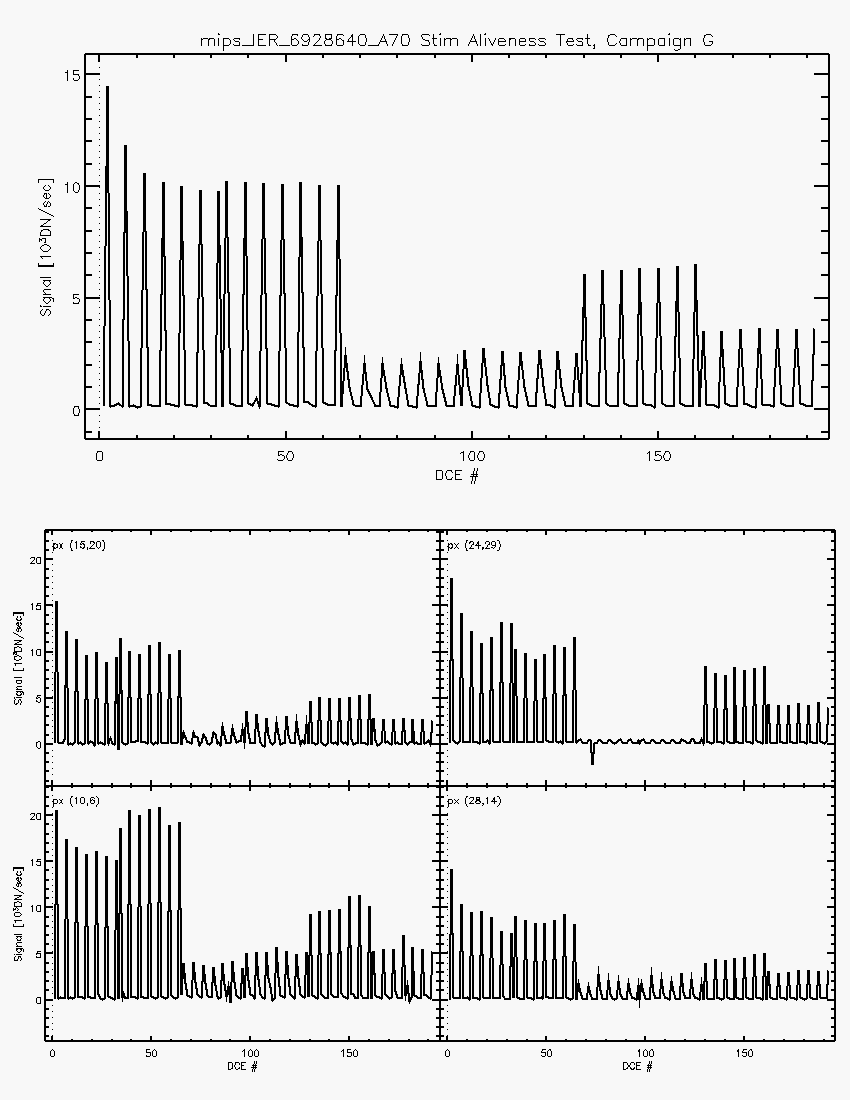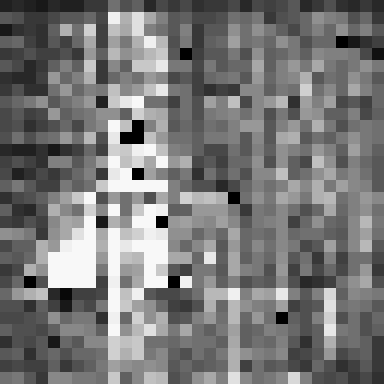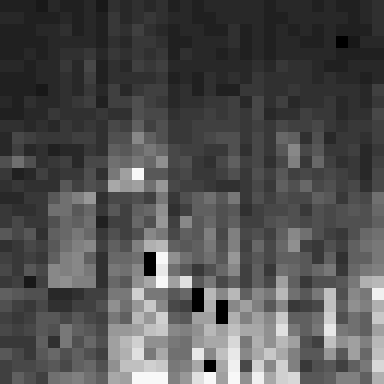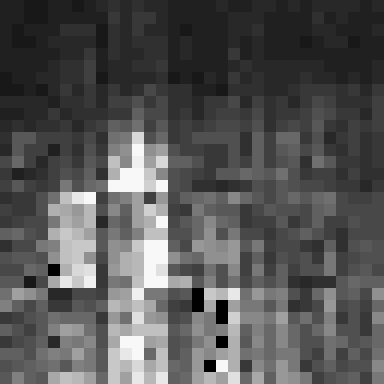
Figure 1.Signal (DN/s) on the 70 µm array during the stim aliveness test. The changes in stim brightness are due to the use of different stims and/or different DAC settings for the stims, as summarized in the table above.
Principal:
Deputy:
Analyst:
AORKEYS:
Last Updated:
All 4 70 µm stimulators (Flood A/B; Flat A/B) were exercised, and Flood A was also
run at 3 settings (nominal, 1/2, and 1/4 brightness). Signals were seen from all 4 stims, indicating
their health. The response at the 3 settings used for Flood A were approximately as expected,
with nominal giving an array averaged brightness of 104 DN/s, 1/2 giving 6500 DN/s,
and 1/4 giving 3700 DN/s. The Flat A stim gave an average signal of 2000 DN/s, and Flat B gave
2700 DN/s. The stim illumination patterns appear unchanged from pre-launch.
The array-average signal (DN/s) was computed for all 192 DCEs collected and plotted vs.
DCE number, and compared with expected signal levels. The signal from four individual pixels
was similarly plotted. The illumination pattern from all four stims was also examined.
The data were taken in 32-DCE groups. The stim used, DAC setting, and array-average stim
brightness are tabulated below. Results from the 160 µm aray are also given.
Analysis
Results
| DCEs | 70 µm Stim | DAC | <signal> (DN/s) | 160 µm Stim | DAC | <signal> (DN/s) | |
|---|---|---|---|---|---|---|---|
| 1 - 32 | Flood A | 0x33 | ~10000 | Flood A | 0x40 | ~35000 | |
| 33 - 64 | Flood B | 0x33 | ~10000 | Flood B | 0x3C | ~35000 | |
| 65 - 96 | Flat A | 0x?? | ~2000 | Flood B | 0x3C | ~35000 | |
| 97 - 128 | Flat B | 0x?? | ~2700 | Flood B | 0x3C | ~35000 | |
| 129 - 160 | Flood A | 0x2D | ~6500 | Flood A | 0x33 | ~12000 | |
| 161 - 192 | Flood A | 0x27 | ~3700 | Flood A | 0x30 | ~5000 |
Figure 1 shows the array averaged signal (DN/s) and the signal from 4 pixels on the 70 µm
array from the entire experiment. The data were analyzed with mips_sloper with the electronic linearity
correction turned off.
Figure 1.Signal (DN/s) on the 70 µm array during the stim aliveness test. The changes in stim brightness are due to the use of different stims and/or different DAC settings for the stims, as summarized in the table above.
Figure 2 shows the same thing, but for the 160 µm array. The data were frequently saturating,
and slopes were frequently difficult to determine as can be seen in the panels for individual pixels.
Figure 2.Signal (DN/s) on the 160 µm array during the stim aliveness test. The changes in stim brightness are due to the use of different stims and/or different DAC settings for the stims, as summarized in the table above.
Figure 3 shows images of the stim illumination for all 4 70 µm stimulators. The illumination
patterns are consistent with those seen in ground-test data.
| Flood A, 0 - 20k DN/s | Flood B, 0 - 20k DN/s |
 |
 |
| Flat A, -1k - 8k DN/s | Flat B, -1k - 9k DN/s |
 |
 |
The 70 and 160 µm stimulators are all operational post-launch. The brightness of the 70 µm stims is close to what was predicted before launch, and the nominal setting appears to be about right (we were aiming for about 8000 DN/s, and got about 10000 DN/s). The 160um stims are brighter than we had predicted, and may need to be run at a lower DAC setting.
Stim repeatability appears to be good in an array-averaged sense at 70 µm.
The 160 µm stim test, mips-248, to be run in Campaign H will provide a better
data set for determining repeatability on the 70 µm array.
Repeatability was difficult to assess at 160 µm from these data because many of the
stim flashes were saturating. A Flood A DAC setting of 0x33 appears to be a better choice
than our current nominal setting of 0x40.
Output and Deliverable Products
None.
Actions Following Analysis
Consider changing the 160 µm Flood A DAC setting from 0x40 to 0x33 (or so) after
analyzing the mips-248 data in Campaign H. This action has the lein that the array
biases have not been optimized. Once optimization has been performed we may find that
the current stim settings are good.